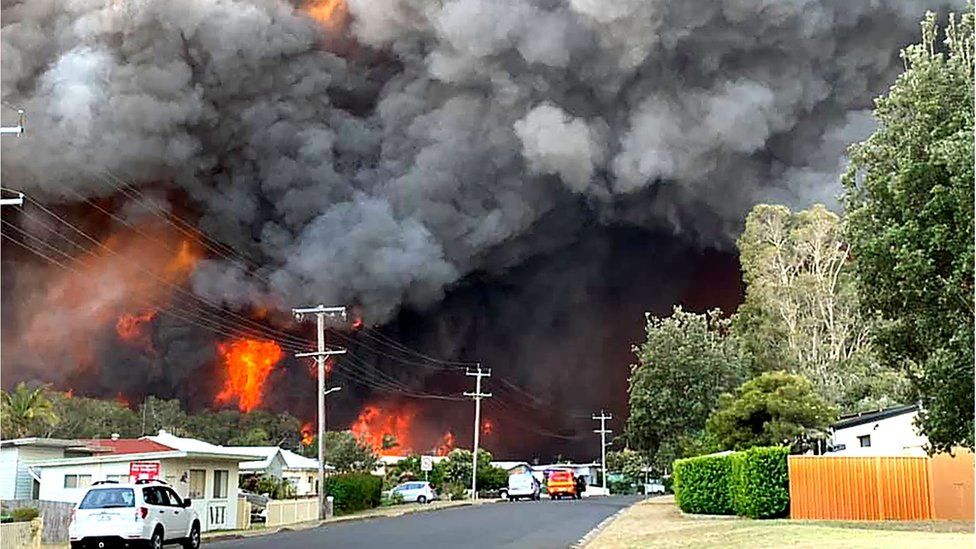Navigating Residential Or Commercial Property Safety: Understanding the Value of a BAL Report
Navigating Residential Or Commercial Property Safety: Understanding the Value of a BAL Report
Blog Article
Ensuring Bush Fire Protection With Proper BAL Report Analysis
In the world of bush fire security, the careful analysis of Bushfire Assault Degree (BAL) records stands as a foundation for guarding residential or commercial properties versus the damaging influence of wildfires. With ecological elements and property features playing significant duties in figuring out the degree of risk, a complete understanding of BAL rankings ends up being essential. The actual essence lies not simply in understanding these reports however in decoding them efficiently to formulate tailored fire protection approaches. By delving into the value of BAL record analysis, we uncover a realm where educated decisions pave the path towards boosting residential property security and resilience in fire-prone areas.
Understanding Bushfire Attack Degree (BAL)
In the world of bushfire protection, comprehending the Bushfire Strike Degree (BAL) is paramount for ensuring effective reduction methods. Recognizing the BAL score of a property is crucial for residential or commercial property policymakers, owners, and building contractors to apply appropriate procedures to protect against bushfire threats.

Significance of BAL Record Evaluation
An important facet in bushfire protection planning includes the comprehensive analysis of BAL reports to examine the potential threats and figure out appropriate reduction techniques. BAL reports provide vital information concerning the prospective influence of bushfires on a residential or commercial property based on various aspects such as greenery kind, range to potential fire threats, and slope of the land. Examining these reports with precision is paramount in creating reliable bushfire protection measures customized to the details danger account of a residential or commercial property.
Carrying Out Fire Security Steps
Carrying out efficient fire protection actions is important for guarding buildings in bushfire-prone locations. Among the key means to improve fire protection is by developing defensible area around structures. This entails cleaning combustible greenery, such as dry fallen leaves and branches, within a certain radius of the building. Additionally, mounting fireproof roof materials can help in reducing the threat of cinders sparking the roofing throughout a bushfire. Effectively maintained displays and rain gutters are also vital to prevent particles build-up that can sustain a fire.
Additionally, having a properly maintained and appropriate water supply, such as a container or pool, can assist firefighters in their efforts to safeguard the property. It is very important to have a clear discharge plan in position and to make sure that all citizens recognize with the treatments. In addition, having firefighting tools easily available, such as tubes and fire extinguishers, can help in taking on tiny place fires before they intensify. Generally, implementing a combination of these fire protection measures can dramatically enhance the opportunities of safeguarding buildings during bushfire events.
Mitigating Threats in Fire-Prone Areas
To strengthen residential or commercial properties versus bushfire dangers, a tactical focus on mitigating threats in fire-prone areas is crucial. One crucial element of danger mitigation is maintaining defensible try this site area around buildings by removing flammable plants, guaranteeing sufficient spacing between frameworks and trees, and using fire-resistant landscaping practices.
Additionally, building or retrofitting buildings with fireproof products and making sure correct upkeep of roofings, seamless gutters, and exterior cladding can significantly enhance the building's resilience to bushfires. Creating and exercising a bushfire emergency strategy with all owners, including evacuation procedures and interaction techniques, is additionally vital in mitigating risks successfully. By embracing a positive method to take the chance of reduction in fire-prone areas, home proprietors can better safeguard their assets and boost overall bushfire readiness.
Ensuring Property Safety and Strength
Guaranteeing the safety and security and durability of homes in fire-prone areas needs an unwavering dedication to durable precautionary steps and critical preparation. Home safety and security starts with applying reliable actions to minimize fire hazards. This consists of maintaining a defensible area around the residential or commercial property by removing flammable plant life, guaranteeing proper maintenance of roofs and rain gutters, and making use of fire-resistant structure materials. Normal upkeep of firefighting devices, such as tubes and lawn sprinkler, is likewise crucial to home durability.
Strength, on the various other hand, includes the capacity of a building to stand up a fantastic read to and recoup from a bushfire. By proactively dealing with these elements, property owners can much better safeguard their properties and enjoyed ones from the danger of bushfires.
Final Thought
To conclude, making certain helpful resources bushfire security through proper BAL record evaluation is essential for comprehending the degree of threat postured by bushfires and executing essential fire defense steps. By alleviating dangers in fire-prone locations and making sure residential property safety and durability, individuals and areas can much better get ready for and respond to bushfire events. It is essential to focus on fire safety and security steps to shield lives and property in these risky atmospheres.
In the realm of bush fire security, the careful analysis of Bushfire Attack Degree (BAL) records stands as a keystone for protecting properties versus the disastrous effect of wildfires (BAL Report). Recognizing the BAL rating of a residential or commercial property is critical for residential or commercial property policymakers, contractors, and proprietors to carry out appropriate actions to protect against bushfire threats

BAL reports offer important details about the prospective influence of bushfires on a property based on different factors such as plant life kind, distance to possible fire risks, and incline of the land (BAL Report). On the whole, implementing a mix of these fire protection steps can considerably increase the possibilities of securing homes throughout bushfire occasions
Report this page